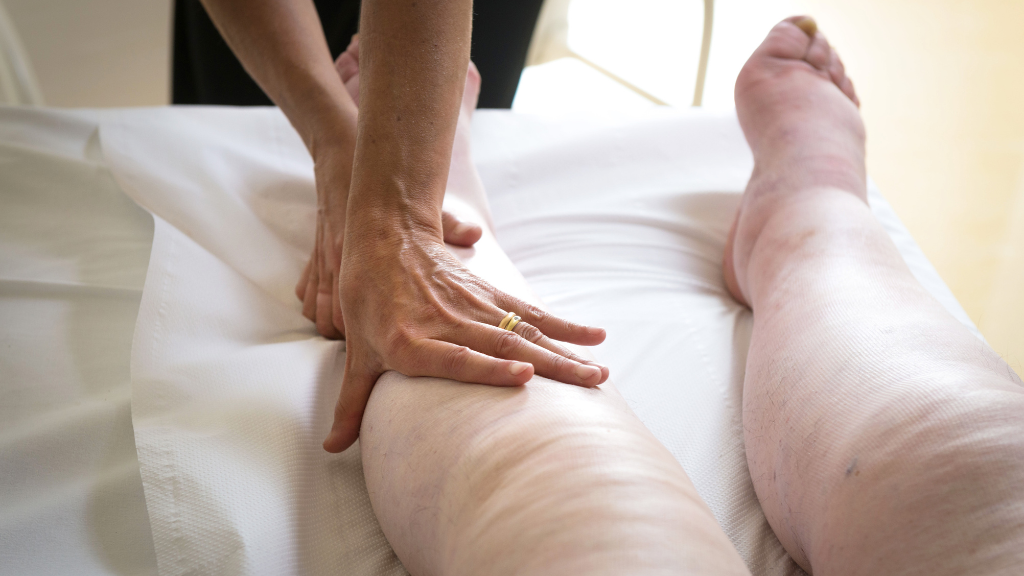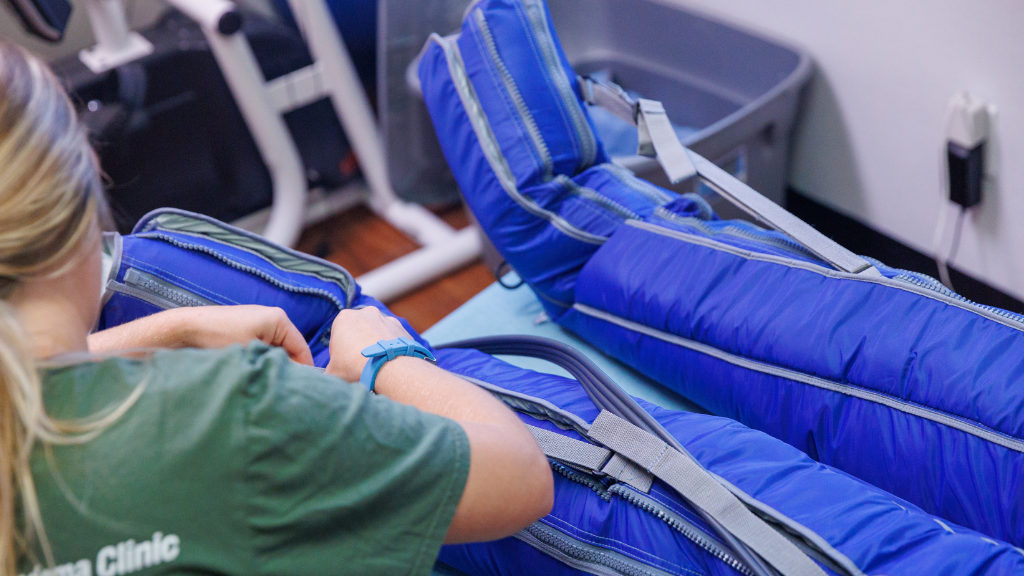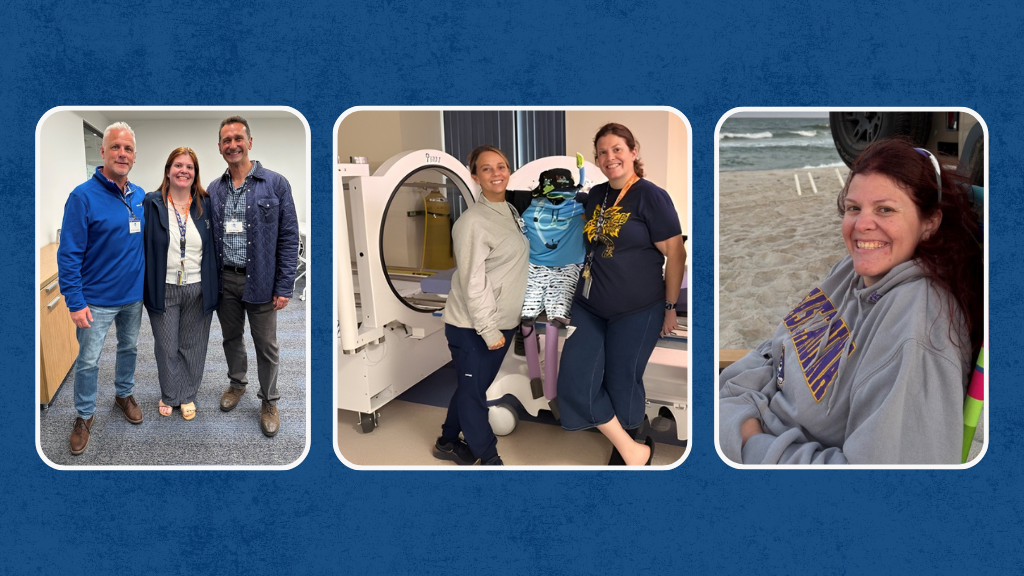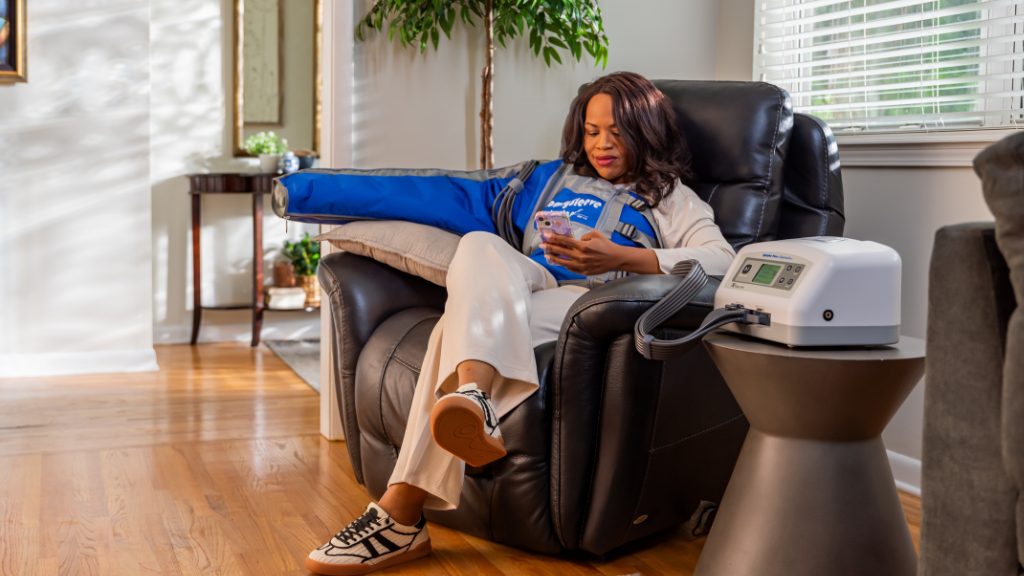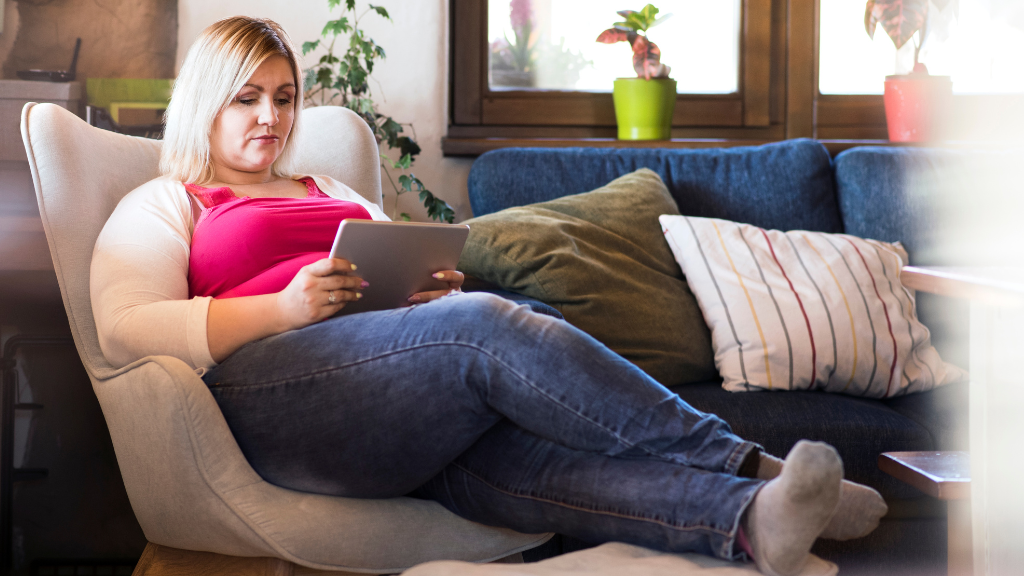
Living with lymphedema can feel overwhelming, but there are proven therapies that can help ease symptoms and improve quality of life. Manual lymphatic drainage (MLD) and intermittent pneumatic compression (IPC) are two supportive treatments that complement each other.
Combining MLD and IPC can help manage swelling, promote comfort, and support your daily care routine. Huyen Vitale, PT, CLT-LANA, explains how MLD and IPC work and how they can empower you in caring for yourself.
What is Manual Lymphatic Drainage?
Manual lymphatic drainage is a gentle, hands-on therapy that helps move fluid through the lymphatic system. It’s often part of the treatment for fluid buildup conditions like lymphedema and chronic venous insufficiency.
“People often think MLD is like deep tissue massage, but it’s actually very gentle,” explains Vitale. “We use soft, rhythmic movements along the surface of the skin to guide lymph fluid toward healthy lymph nodes. There, it can drain properly. MLD also stimulates better blood circulation from the extremities back to the heart.”
How Does MLD Help Lymphatic and Venous Conditions?
With lymphedema, MLD helps reduce swelling by stimulating lymphatic fluid to flow away from swollen areas and improving circulation.
For people with chronic venous insufficiency, MLD improves blood flow in the surface blood vessels and deep veins. It also helps clear the swelling due to lymph fluid that often happens with venous conditions.
How do MLD and IPC Work Together?
MLD and IPC work together to move fluid and support lymphatic health. “These two therapies complement each other by addressing different aspects of fluid management,” says Vitale.
IPC devices, like Lympha Press®, use a pump to inflate garments that apply pulsing pressure, helping to move fluid away from swollen areas. IPC mimics muscle movement to encourage circulation, while MLD provides targeted treatment.
Therapists Use MLD and IPC Together for Better Outcomes
Many certified lymphedema therapists use IPC to start a lymphedema treatment session, helping soften hardened tissue and reduce swelling. Using IPC first makes MLD more effective, allowing the therapist to better target problem areas and stimulate drainage. Vitale says that allowing IPC to do some of the initial work makes her hands-on therapy much easier.
IPC and MLD also help manage lipedema, a condition characterized by an abnormal buildup of fat cells. “Combining these therapies helps reduce the pain and inflammation of lipedema,” says Vitale.
Combining MLD and IPC for Challenging Conditions
Using the two therapies together is especially important for people living with moderate or severe lymphedema or lipedema. MLD alone typically isn’t enough because of the presence of fibrotic tissue. Fibrosis develops when the immune system responds to long-term swelling, which can cause cells to thicken and harden.
“We need to use IPC for more severe cases because it helps break up the fibrosis,” says Vitale. “When the tissue is fibrotic, it’s like trying to get lymph fluid to flow through a brick wall. When we soften it with IPC first, then we can go in with MLD and stimulate lymphatic flow.”
How to Use MLD with IPC at Home
A trained therapist can show you how to do MLD as part of your treatment plan. Then you can continue MLD at home to support your care between clinic visits.
Vitale teaches her patients to use MLD during and after IPC pumping sessions. She offers tips for performing MLD on yourself:
- Start with MLD near healthy lymph nodes: Work in sections, starting near healthy nodes and moving toward swollen areas. However, always make your hand movements go toward the lymph node. By starting where there is less fluid and moving to areas where there is more, you “clear the path” for the fluid to reach the lymph nodes.
- Use flat hands and slow, repetitive strokes: Gently stretch the skin to stimulate fluid flow.
- Apply very light pressure: “When you think you’re gently applying pressure along the surface of your skin, go even lighter,” advises Vitale.
- Work on one section: Spend focused time with each area of the body.
- Be consistent: Regular MLD helps maintain results and prevent fluid buildup.
Vitale adds that diaphragmatic breathing during IPC and MLD sessions can also help fluid move. This breathing technique, where you breathe deeply into your belly, stimulates lymph drainage from your extremities into your abdomen.
Benefits of Using MLD and IPC at Home
“Using MLD and IPC at home, along with the rest of the treatment plan, enables people to continue their therapy effectively on their own,” says Vitale. “It gives people independence and more control.” Home use of MLD and IPC is especially critical for people who don’t have easy access to a certified lymphedema therapist or nearby clinic.
Consistent home treatment with IPC and MLD, combined with compression and a healthy lifestyle, helps slow the progression of lymphedema and lipedema. In addition to reducing swelling, it improves pain and mobility, enhancing overall quality of life.
To support your at-home MLD routine, explore Lympha Press systems designed to enhance lymphatic flow. Learn how our devices can help support your daily care, including swelling management.
